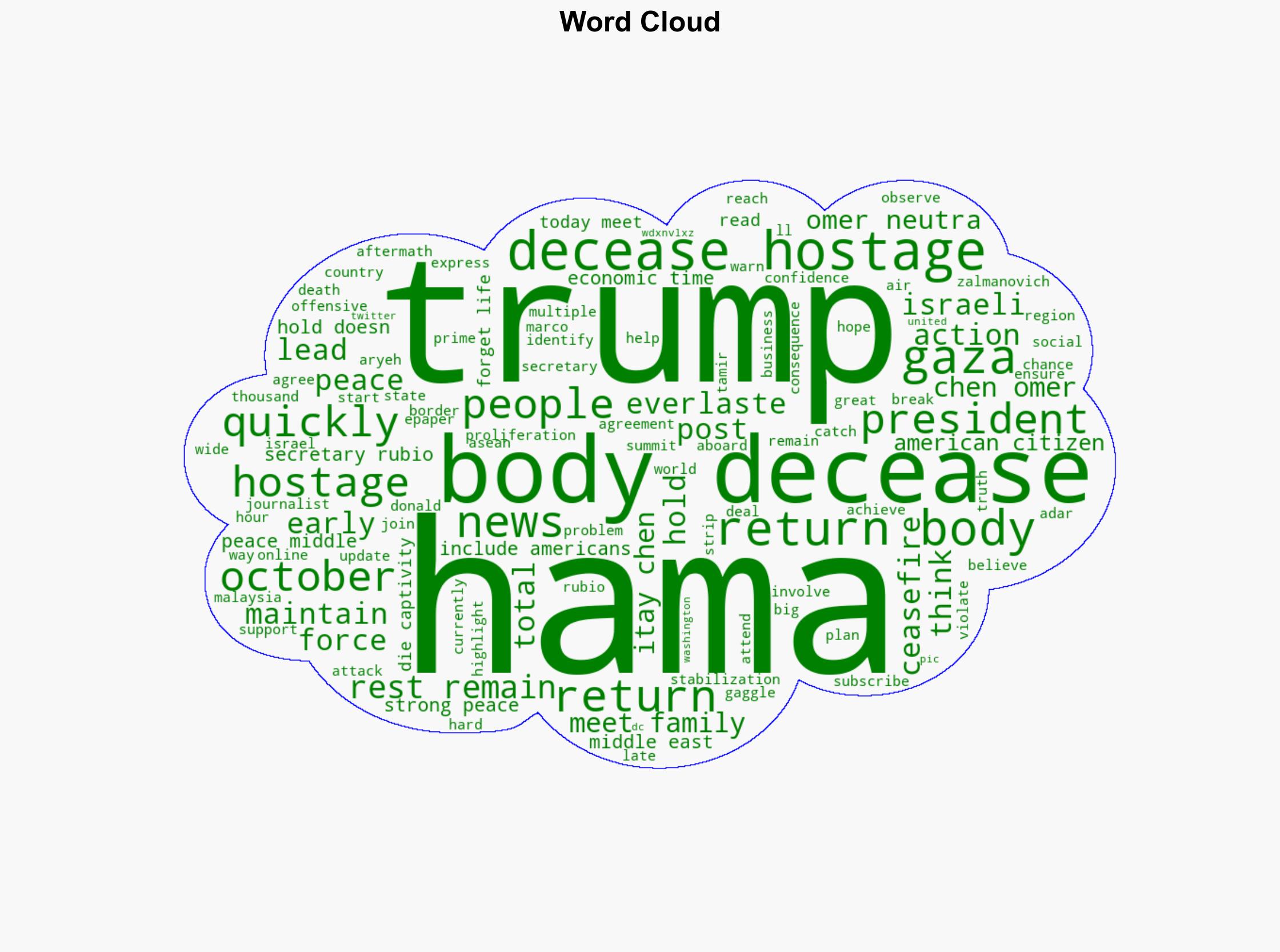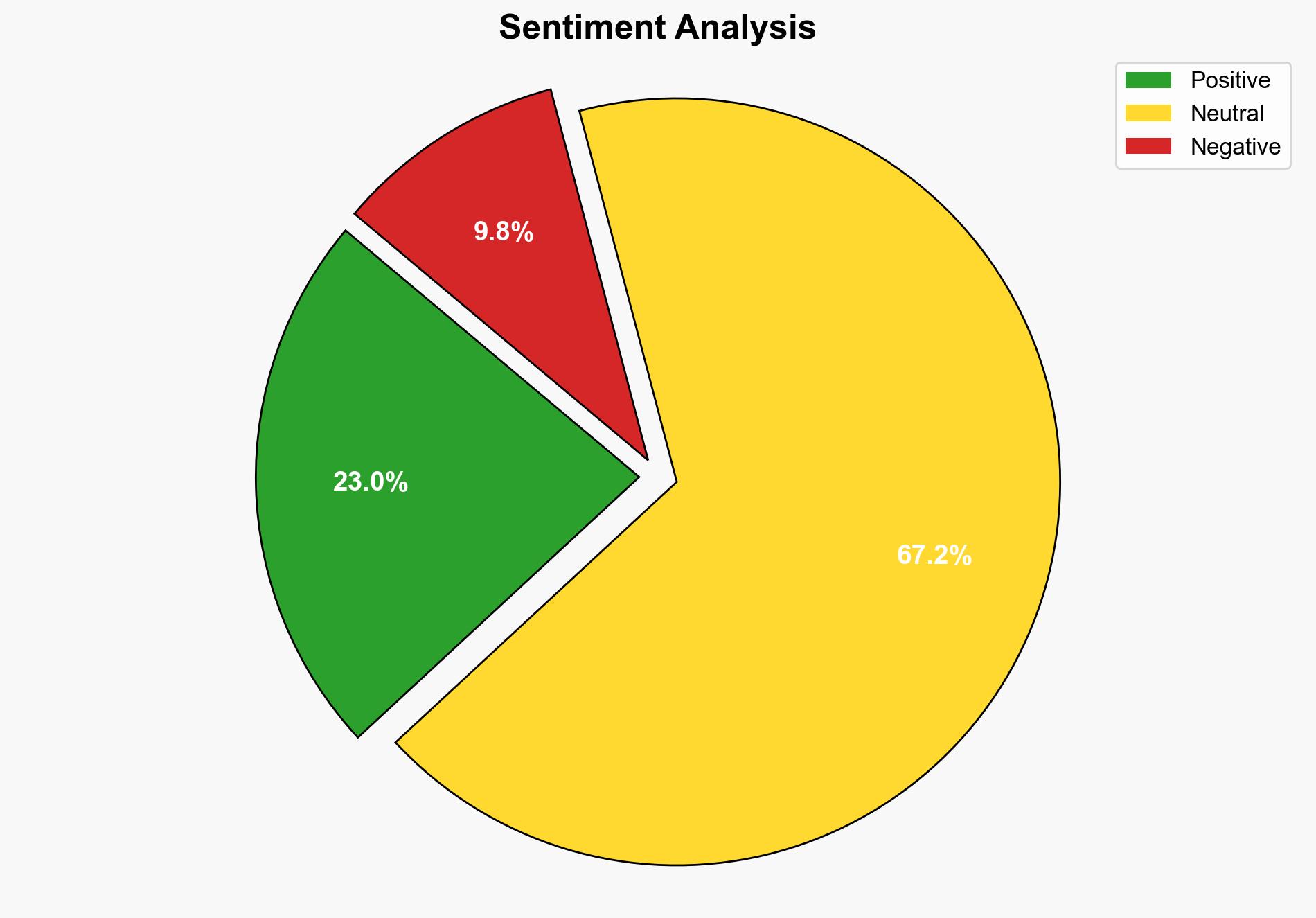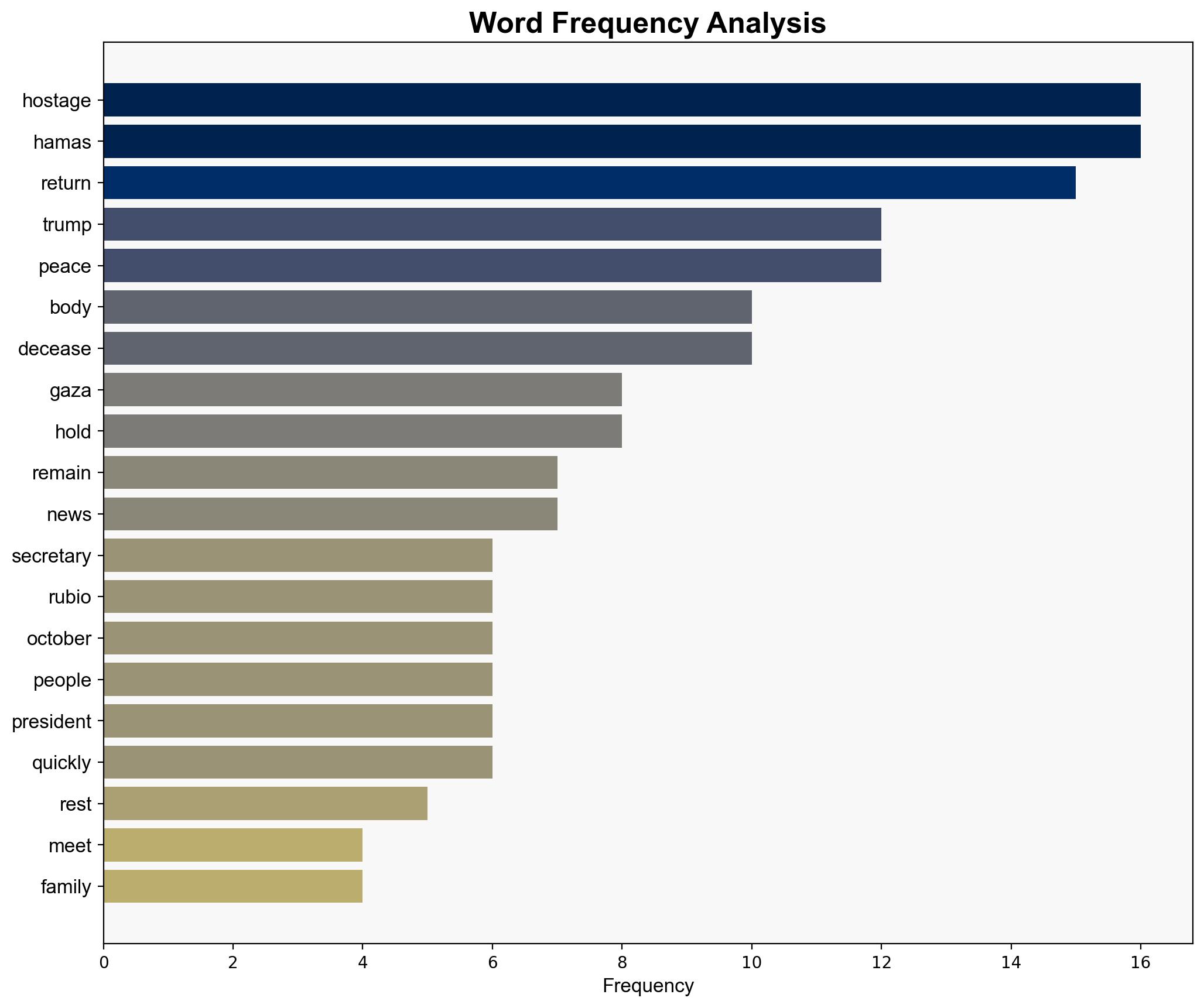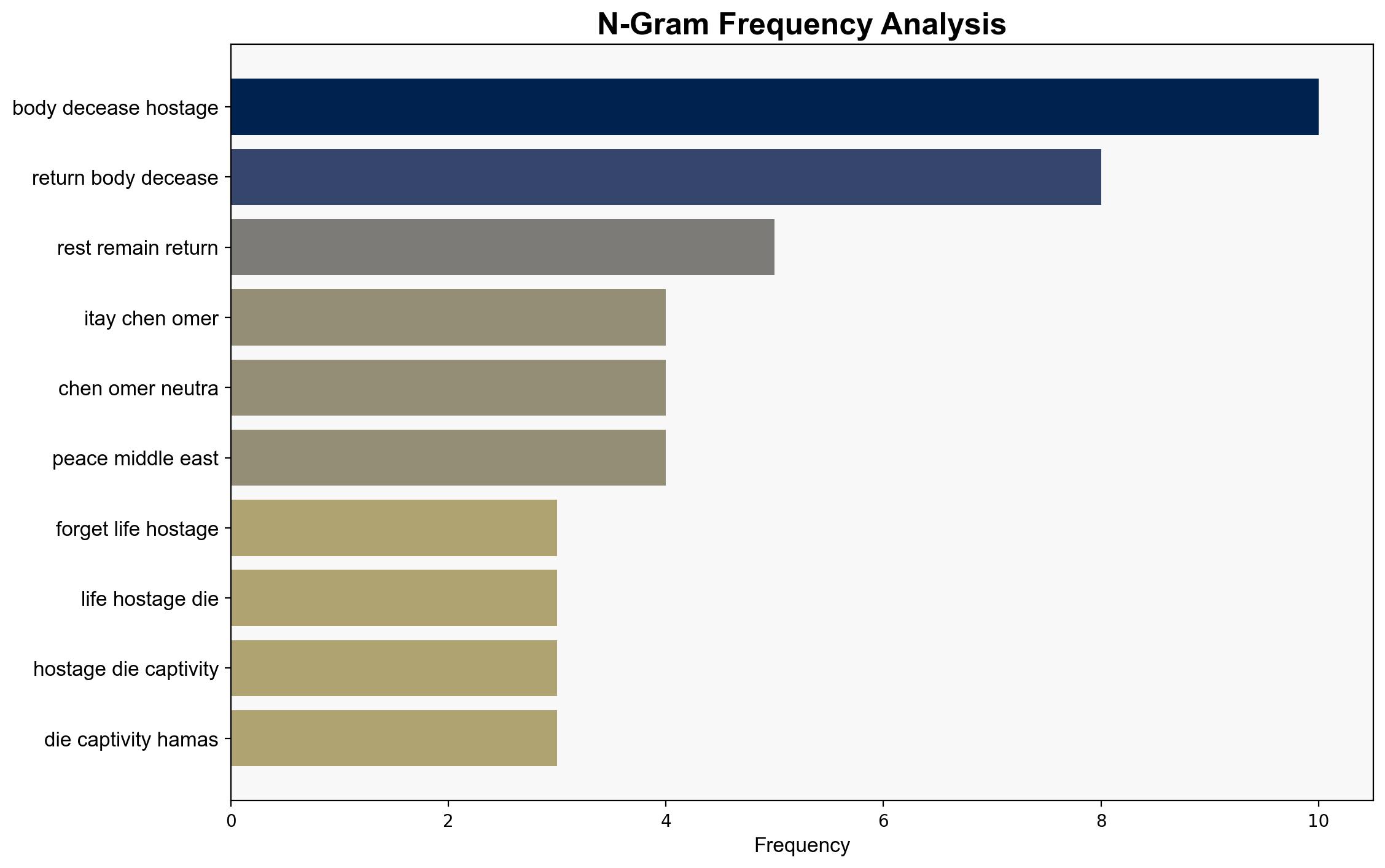Will not rest untilreturned US State Secy meets families of deceased Gaza hostages – The Times of India
Published on: 2025-10-26
Intelligence Report: Will not rest untilreturned US State Secy meets families of deceased Gaza hostages – The Times of India
1. BLUF (Bottom Line Up Front)
The intelligence suggests two primary hypotheses regarding the US Secretary of State’s actions and statements concerning the return of hostages’ bodies from Gaza. The most supported hypothesis is that the US is leveraging diplomatic pressure to facilitate the return of hostages’ remains as part of a broader peace strategy. Confidence in this assessment is moderate due to the complexity of the geopolitical environment and the potential for misinformation. Recommended action includes continued diplomatic engagement and preparation for potential escalation if negotiations falter.
2. Competing Hypotheses
1. **Diplomatic Leverage Hypothesis**: The US is using the return of hostages’ bodies as a diplomatic tool to pressure Hamas and other regional actors into compliance with broader peace initiatives. This aligns with statements from President Trump and Secretary Rubio emphasizing peace and stability.
2. **Domestic Political Strategy Hypothesis**: The focus on hostages’ bodies is primarily driven by domestic political considerations, aiming to demonstrate strong leadership and compassion to the American public, potentially boosting political capital for upcoming elections.
Using ACH 2.0, the Diplomatic Leverage Hypothesis is better supported by the alignment of international peace efforts and public statements emphasizing regional stability. The Domestic Political Strategy Hypothesis lacks direct evidence of political maneuvering beyond standard diplomatic rhetoric.
3. Key Assumptions and Red Flags
– **Assumptions**: It is assumed that Hamas will respond predictably to diplomatic pressure and that the return of hostages’ bodies is a priority for all involved parties.
– **Red Flags**: The intelligence lacks details on Hamas’s internal decision-making processes and the potential influence of other regional actors. There is also a risk of cognitive bias in interpreting public statements as purely strategic rather than emotionally driven.
4. Implications and Strategic Risks
The situation presents several strategic risks, including the potential for increased regional instability if negotiations fail. The return of hostages’ bodies could be used as a bargaining chip, leading to prolonged conflict. Additionally, there is a risk of cyber and information warfare tactics being employed to sway public opinion and disrupt diplomatic efforts.
5. Recommendations and Outlook
- Continue diplomatic engagement with regional actors to facilitate the return of hostages’ bodies and support broader peace initiatives.
- Prepare contingency plans for potential escalation, including military and cyber responses.
- Best Case: Successful return of hostages’ bodies leads to strengthened peace talks and regional stability.
- Worst Case: Failure to negotiate leads to increased hostilities and regional destabilization.
- Most Likely: Ongoing diplomatic efforts with intermittent progress and setbacks.
6. Key Individuals and Entities
– Marco Rubio
– Itay Chen
– Omer Neutra
– Aryeh Zalmanovich
– Tamir Adar
– Donald Trump
7. Thematic Tags
national security threats, cybersecurity, counter-terrorism, regional focus




